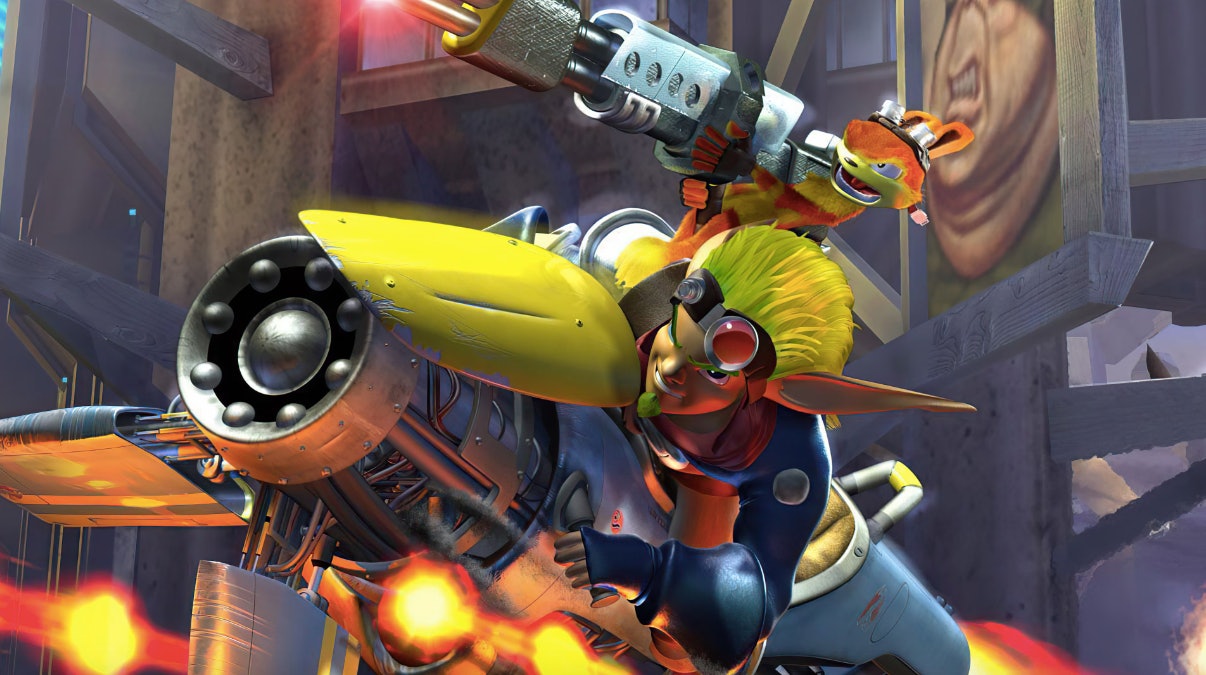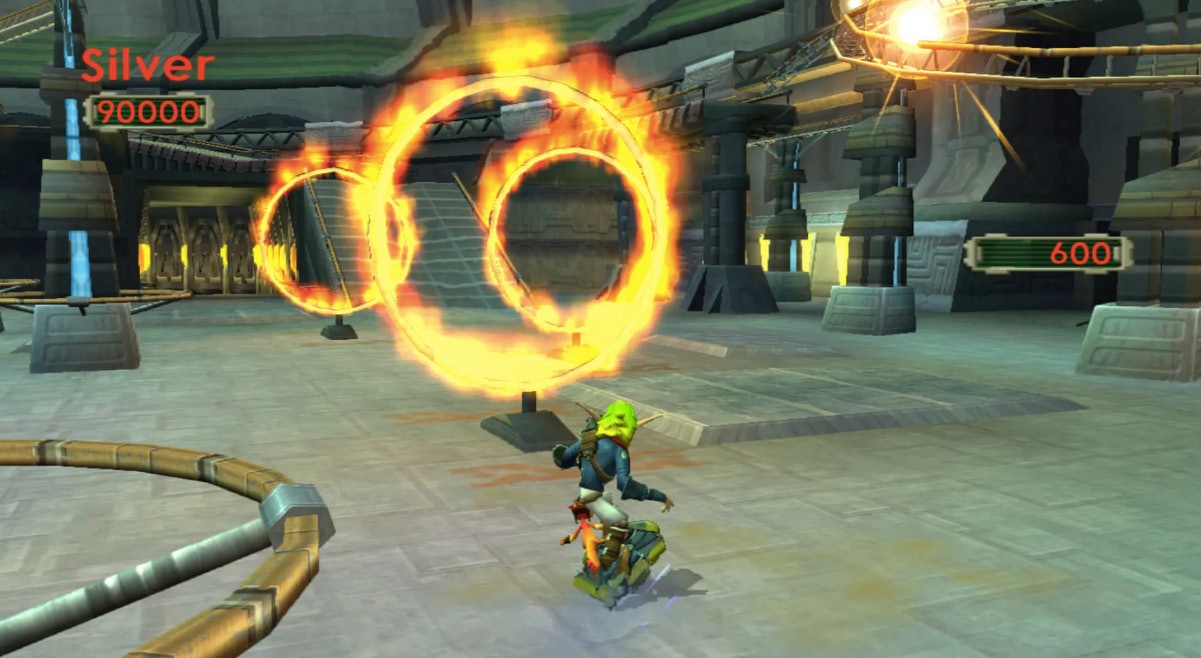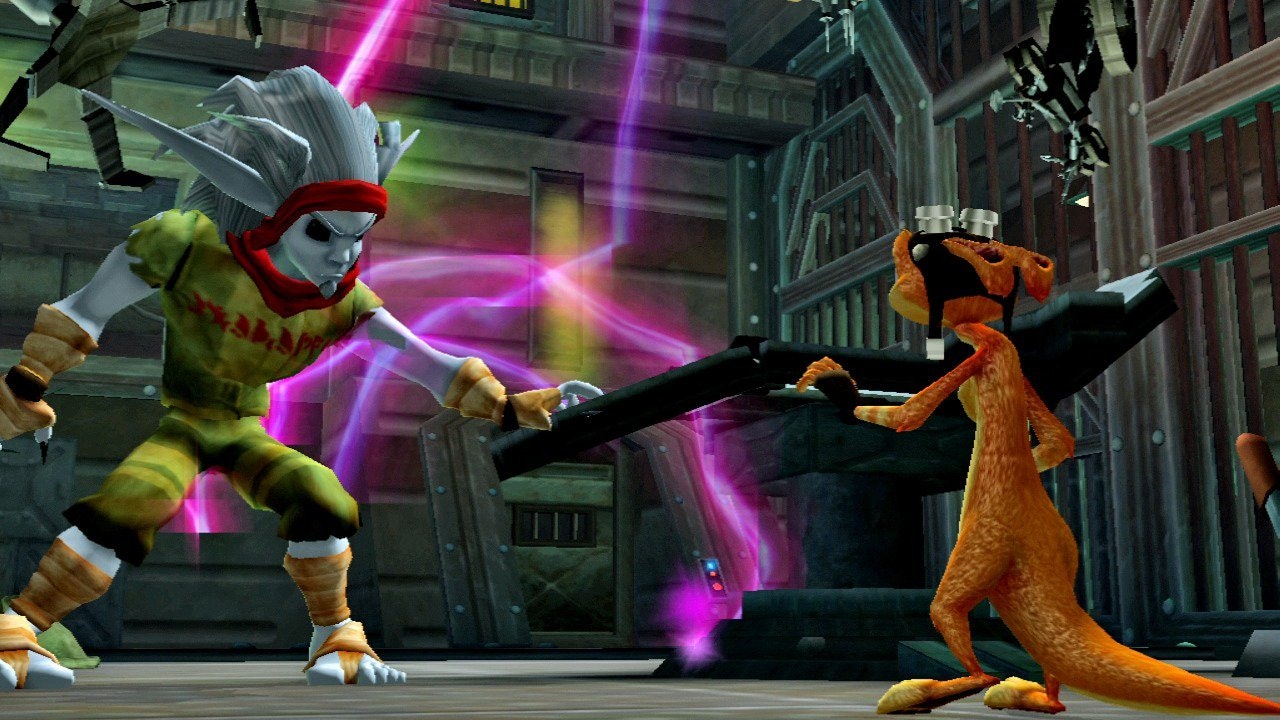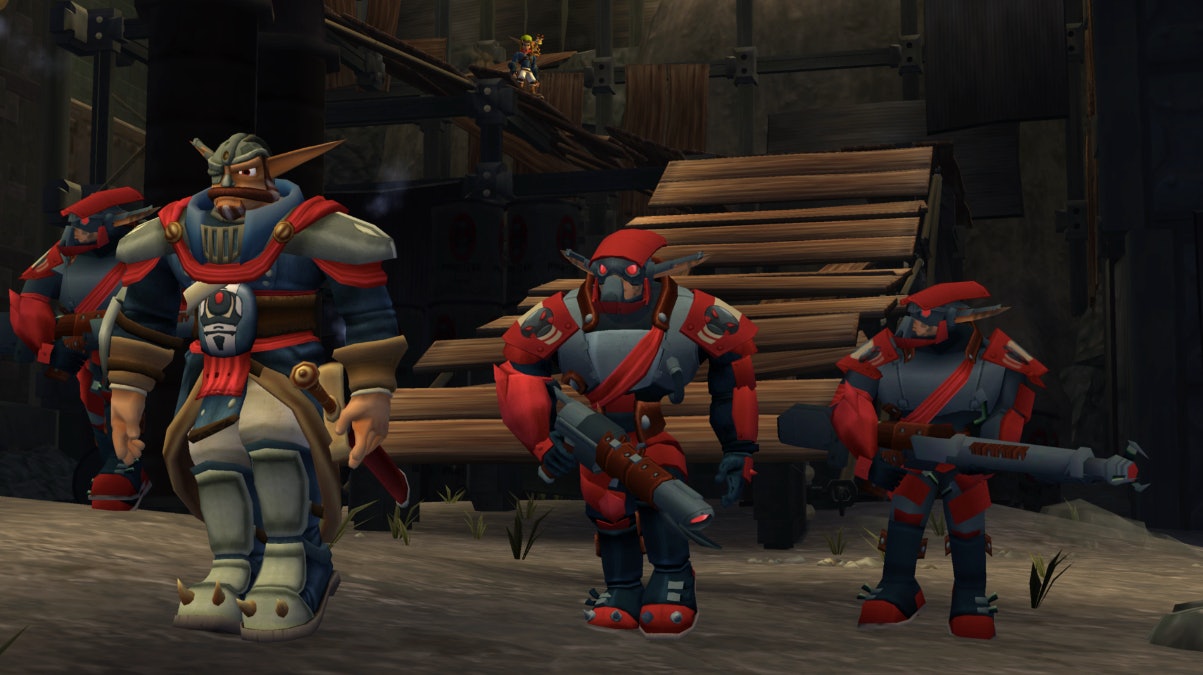
I remember the day. It was an extremely early morning, at least by a young child's standards, and I hurriedly opened my Christmas presents. I was blessed with a new PlayStation 2 and a copy of Jak and Daxter: The Precursor Legacy. I ran upstairs to my room with the crazed enthusiasm of a Philadelphia sports fan. My cousin was with me and he helped set the bad boy up (because I was, and still am, an idiot), and behold…the future! The graphics. The box art. Even the opening music. We were both hooked.
Aside from Daxter’s screaming scaring the bejesus out of us, it was perfect. But little did I know that just a couple years later, it would actually be Jak II that completely vaporized every atom in my body with pure amazement and surprise.

Released on October 14, 2003, Jak II was a major departure from the original. The Precursor Legacy wasn’t necessarily a majorly different game from others that came before. It was a big-budget, E-rated platformer with special power-ups and a collect-a-thon structure, much like Super Mario 64 or Banjo-Kazooie. (This isn’t a slight. Developer Naughty Dog proved it could deliver that flavor of game quite well, as evidenced by the Crash Bandicoot series. And I absolutely adored The Precursor Legacy, even if that giant sea shark still haunts me to this day.) But jumping into Jak II blind after playing the first was like not knowing Arnold would actually be the good guy in Terminator 2.
Guess what, young whipper-snapper? This one is rated T. Oh, you liked the resplendent, easy-going aesthetic of the oceans, forests, and temples? Well, now you’re in a city that operates like a police state. Hitting enemies with a spin attack or little fireball power-ups? Forget that. Now you have guns. Still not enough? Jak goes from a non-speaking elven lad to one whose first words are literally a promise to kill someone.

Looking back, some might say it’s not exactly a surprise that Naughty Dog created such an ambitious project. After its minor success with Crash Bandicoot, combined with the updated hardware of the PlayStation 2, it’s no wonder the developer had plenty of room to operate. But even still, the leap was so great. Jak II was profoundly different than anything seen at the time.
Things were completely different from a gameplay perspective, too. Instead of focusing on collecting power cells in the original, Jak II was about navigating through an open-world city and accomplishing tasks given by various characters. Sure, sometimes this entailed a mere fetch quest, but more often, it was something completely different. Blowing up ammo dumps, surviving onslaughts of fascist Crimson Guards cops, delivering packages without the authorities catching you, and even competing in hoverboard races were some of the tasks you might come across.

Exciting doesn’t even begin to describe it. You never knew what you’d do next, or whom for. It wasn’t all that dissimilar to the Grand Theft Auto franchise. Heck, you could even hijack random vehicles people flew throughout the city, or find yourself chased around by the Crimson Guards if you were to attack them or hijack vehicles in front of them. Similar to the GTA star system, I’d occasionally take a break from the mission grind to see how many guards I could beat before they overwhelmed me.
But don’t think all these new ideas took away from what made Precursor Legacy so great. Jak’s acrobatics felt as precise as nearly any platformer on the market, the vehicles were surprisingly fun to control — especially since you could switch hover lanes instantaneously — and the gunplay wasn’t quite up to Max Payne levels of precision or anything, but it was strong nonetheless. Each of the four weapons is handled differently. The rifle was standard for medium-range combat, the shotgun for close range, the Gatling gun for large groups, and the rocket launcher (aptly titled the “Peace Maker”) was for all the above. And that’s all in addition to the dark eco powers you’d come to control, swiftly slashing your way through guards like Wolverine.

But where Jak II evolved in gameplay, it also evolved in story. From reading all of this, or even from just looking at the box art, one might presume that this was simply a game trying to be “edgy” just for the sake of being “edgy,” a trend that was mighty popular back in the early 2000s (looking at you, Shadow the Hedgehog).
While it was certainly a darker story, it also had so much depth. Trying to figure out how Jak ended up in such a dour city landscape, a war to stop the baron of the city and the sinister “Metal Head” army from destroying said city, what happened to your pals from the first game, and many more subplots will keep you hooked throughout. Sometimes, the only motivation you need to beat a brutal mission — and believe me, there are plenty — is to see the next cutscene.
The voice acting, the characters…everything is executed to the 99th percentile in Jak II. These days, Naughty Dog games are synonymous with cinematic storytelling. Jak is a brooding protagonist, but it’s because of Naughty Dog that it works. Daxter, who unfortunately loses credit in the title (poor guy), works as excellent comic relief to offset not just all of Jak’s darkness but also the heinous events taking place. A corrupt government and military, torture, war, prophecies, time travel, and betrayal are all things you’ll encounter on your journey.

It’s not just the plot or dialogue, but all the little things that make them first-class. Ellie telling you jokes in The Last of Us, Daxter’s dances in the original after you collect a power cell in The Precursor Legacy, and even the way Nathan Drake loses his grip climbing walls in the Uncharted series are just a few examples. They’re minor aspects, but they help flesh out the world and make it feel natural and lived-in. Jak II was perhaps the greatest sign the studio was ready to shift into a higher gear.
Usually, at the end of these types of retrospectives, some sort of “don’t get me wrong, it wasn’t perfect” line is included. Jak II certainly fits the bill there, particularly in terms of its difficulty being a bit much at times, and not in the Cuphead sense where everything always feels fair and just. But talking about those minor shortcomings feels pointless. Because when you take a look at the game as a whole — from back in 2003 when things like Ring Pops were still a thing — and acknowledge how ahead of its time it was, serving as a genesis for what Naughty Dog has become today…it’s practically unparalleled.
Jak II wasn’t just a great game, it was a remarkable one.







